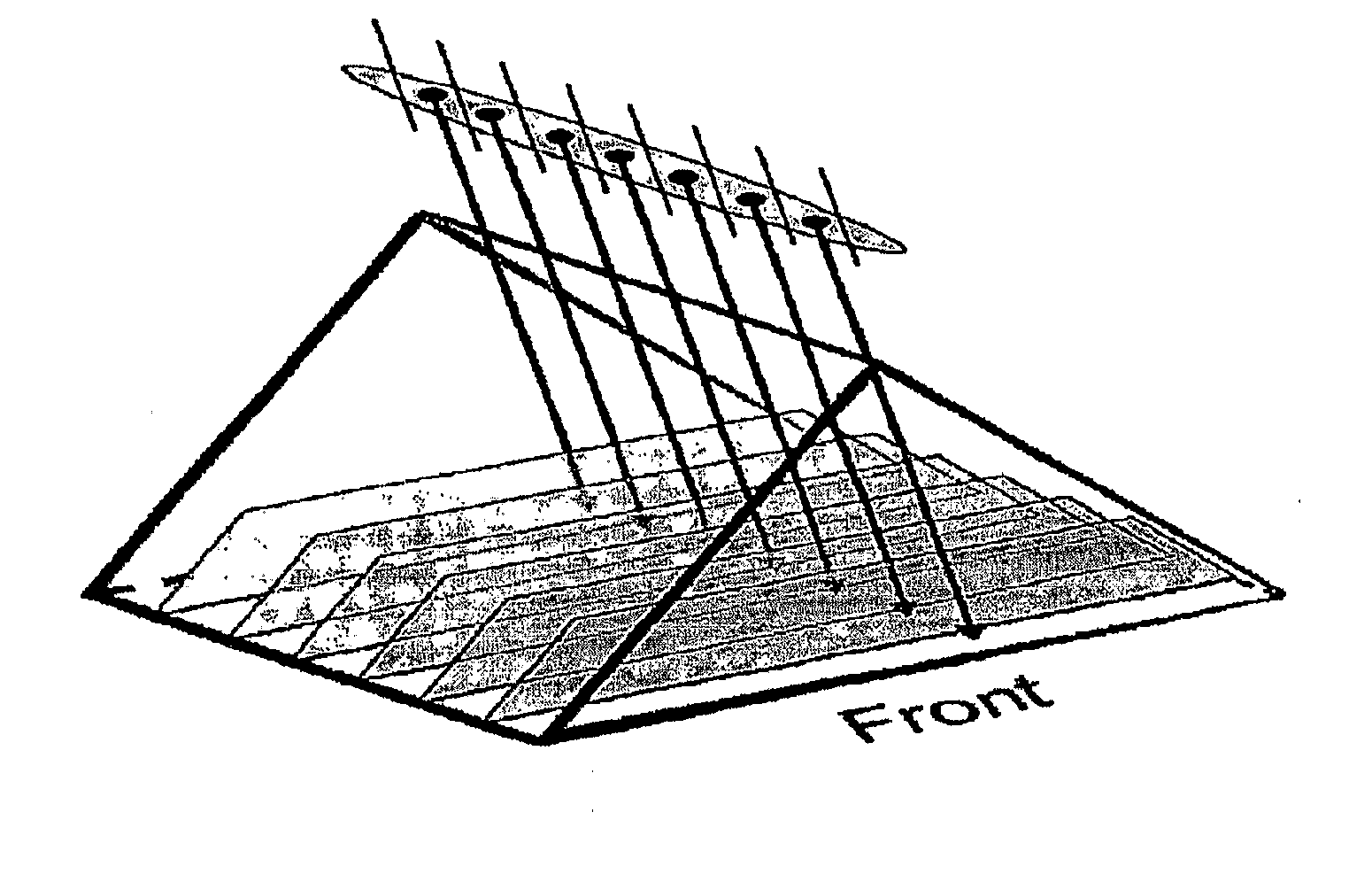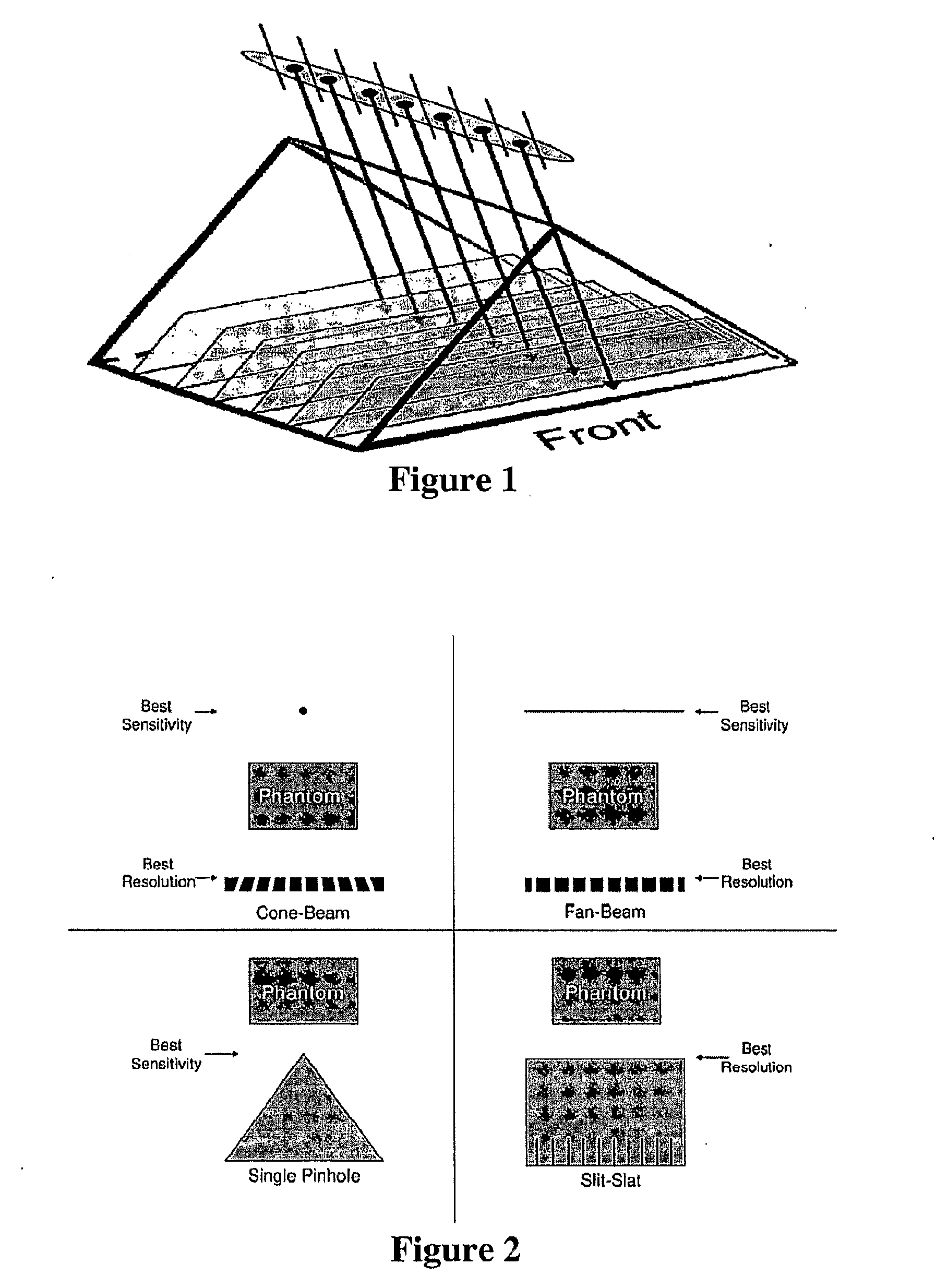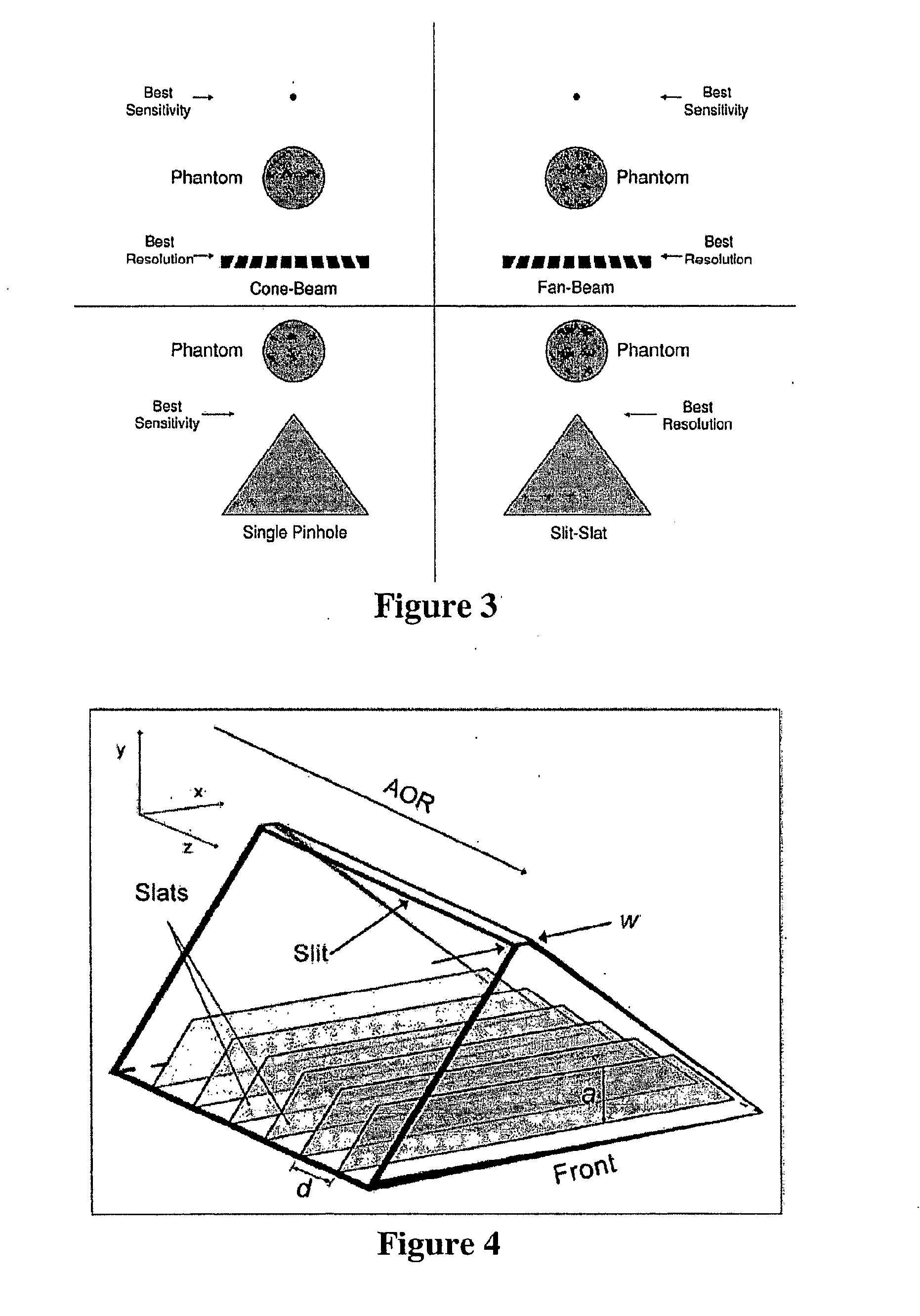Slit-slat collimation
- Summary
- Abstract
- Description
- Claims
- Application Information
AI Technical Summary
Benefits of technology
Problems solved by technology
Method used
Image
Examples
example 1
Comparison of Sensitivity and Resolution for Different Collimator Types
[0213]New experimental and simulated data confirming the previous hypotheses (i.e., on-axis sensitivity of slit-slat is the geometric mean of pinhole and parallel-beam; transaxial and axial resolutions are well predicted by the pinhole and parallel-beam resolution formulas, respectively) have recently been published in the Journal of Nuclear Medicine. The mathematical derivation of these results follows.
Sensitivity and Resolution Results Recently Published by the Journal of Nuclear Medicine
[0214]A simple picture of slit-slat collimation is as the combination of pinhole collimation within transaxial planes separated by septa providing collimation in 1D (the slats). The sensitivity formulas for a pinhole and a parallel-hole collimator are well established. For a pinhole, sensitivity is given by:
gp=kw24πh2sin3θ(EQ.15)
where w is the width of the pinhole (its diameter if the aperture is round), h is the distance of th...
example 2
Single-Pinhole Sensitivity
[0330]The effect of aperture penetration by high-energy photons on pinhole sensitivity has previously been investigated. Not all photons are stopped by the aperture. An analytic expression has been derived for the angle and depth dependence of the sensitivity of pinhole collimators, including the significant, often dominant, edge-penetration term. It has been found that the new analytic expression agrees well with experimental measurements of sensitivity over a range of aperture diameters, collimator materials and photon energies. Independent experimental confirmation was made by Williams et al. (Investigation of efficiency and spatial resolution using pinholes with small pinhole angle. IEEE Transactions on Nuclear Science, 2003. 50(5): p. 1562-1568). The general equation derived for pinhole sensitivity is:
Stotal≈d2sin3θ16h2+sin5tan2α28h2μ2(1-cot2θtan2α2)1 / 2[1-cot2θtan2α2+μdcscθcotα2](EQ.71)
wherein μ is the attenuation coefficient of the collimator material...
example 3
Single-Pinhole Point-Spread Function
[0334]An analytic form for the point-response function (PRF) of a pinhole aperture has been derived. The function is:
PRF={sin3θ4π(h+b)2,r≤d(h+b)2hsin3θ4π(h+b)2-μΔL,r>d(h+b)2h(EQ.73)
[0335]The multi-line equation for ΔL may be found in reference Metzler et al. equation 5 (Analytic determination of the pinhole collimator's point-spread function and RMS resolution with penetration. IEEE Transactions on Medical Imaging, 2002. 21(8): p. 878-887).
[0336]FIG. 28 shows normalized longitudinal profiles of the experimental data for a 0.77 mm-diameter, 101° opening angle tungsten aperture. A similar figure for a 4.0 mm-diameter, 84° opening angle tungsten aperture is in Metzler et al. “Pinhole collimator's point-spread function”FIG. 7. A Tc-99m line source was used for the acquisition.
PUM
 Login to View More
Login to View More Abstract
Description
Claims
Application Information
 Login to View More
Login to View More - R&D
- Intellectual Property
- Life Sciences
- Materials
- Tech Scout
- Unparalleled Data Quality
- Higher Quality Content
- 60% Fewer Hallucinations
Browse by: Latest US Patents, China's latest patents, Technical Efficacy Thesaurus, Application Domain, Technology Topic, Popular Technical Reports.
© 2025 PatSnap. All rights reserved.Legal|Privacy policy|Modern Slavery Act Transparency Statement|Sitemap|About US| Contact US: help@patsnap.com



